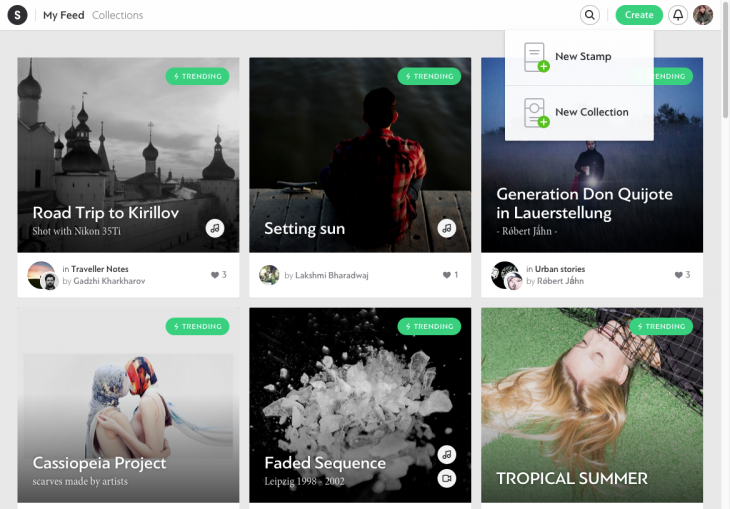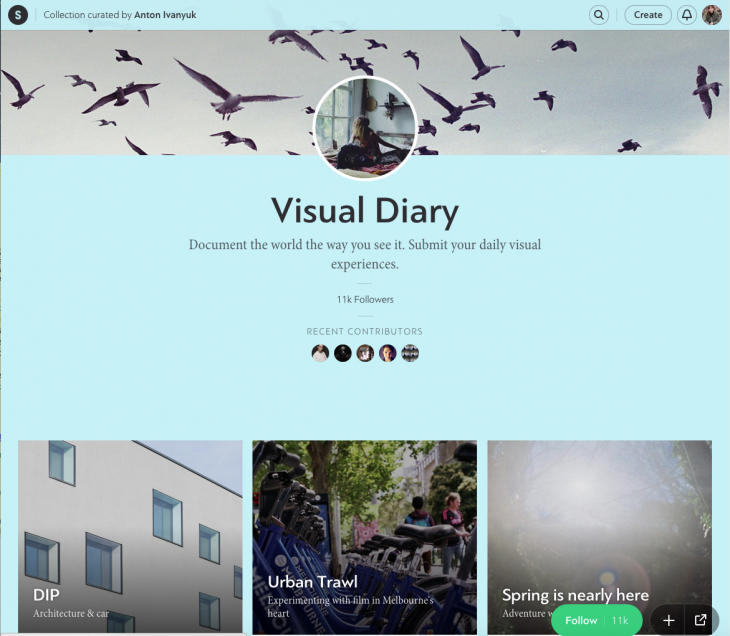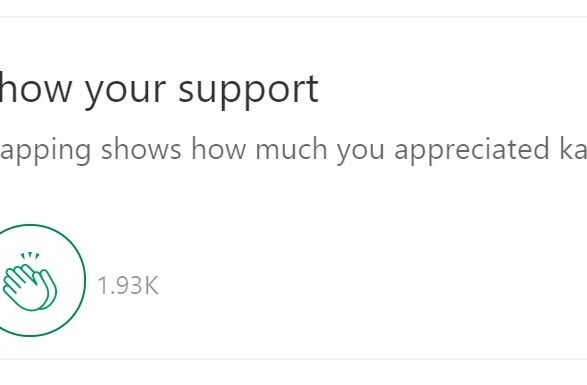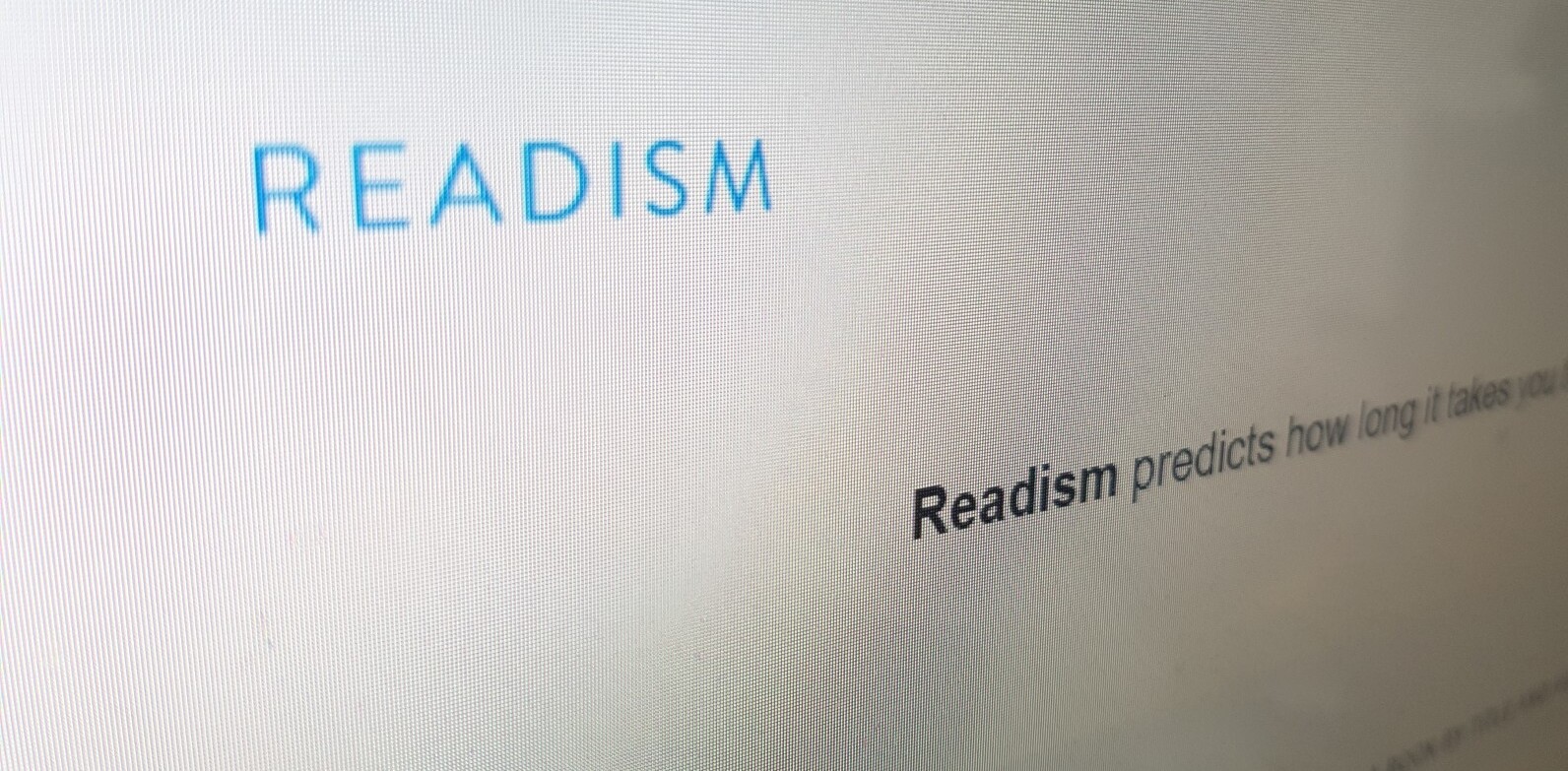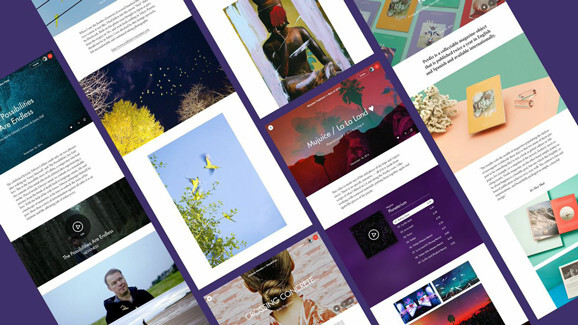
Here’s the scenario: A website is overkill and poorly aligned with your artistic vision, and relying on Facebook or Tumblr doesn’t quite cut it either. What you want is a socially oriented vehicle that caters specifically to visual storytelling and moodboard-type output.
Stampsy aims to fill that niche with a new, Web-based community platform for sharing stories and experiences. It allows for the artistic presentation of high-quality visuals, letting you publish your own work and that of others.
“This is a frictionless way to create a long-form narrative in a magazine-like format,” Roman Mazurenko, Stampsy’s co-founder, told TNW. “There are two types of Web editors out there: What You See is What You Get and What You Mean is What You Get; we have the latter.”
Stamps are units of content that you construct with a variety of images, text, video and audio to tell an overarching story. You can assemble content of your own creation or from other Stampsy community members for your narrative.
And it doesn’t take all day. Once you sign in, you can create a stamp in minutes.
While even easy Web builders require a concept and foster the expectation of consistent updates, Stampsy lets you create a unified but self-contained statement that serves as a complete and finished work.
Another fundamental aspect of Stampsy is its promotion of “remix culture” which encourages the use and reuse of other users’ content in the mashup of a new stamp. You can even build a stamp that does not feature any of your own content, if you want.
The platform’s Collect feature lets you save, repost or merge images from any other user alongside your own content to spin new stories.
Whenever someone else’s images are used, they appear with a credit and a link back to the original source; the creator is notified that their work has been used and credited in another Stamp.
This differs from Tumblr in that the image you re-blog does not go directly into your feed without context. Instead, you can save groups of images into a stamp to build the context you need.
Mazurenko sees collections almost as digital magazines that guide viewers to various different stamps. Users can also exchange creative ideas by pitching their stamp to a relevant collection, or starting a collection of their own, and recruiting stamps from friends and peers. “We hope that collections will evolve into proper online magazines for artists and designers,” Mazurenko said.
The Stampsy community supports the remixing content, both for the exposure and because everything gets credited back to the creator.
Stampsy is free and carries no advertising. However, Mazurenko is contemplating various ways to support Stampsy, such as offering a freemium version and then charging for added on capabilities, charging extra to users who want to keep their stamps private or offering fee-based accounts to brands.
➤ Stampsy
Get the TNW newsletter
Get the most important tech news in your inbox each week.
